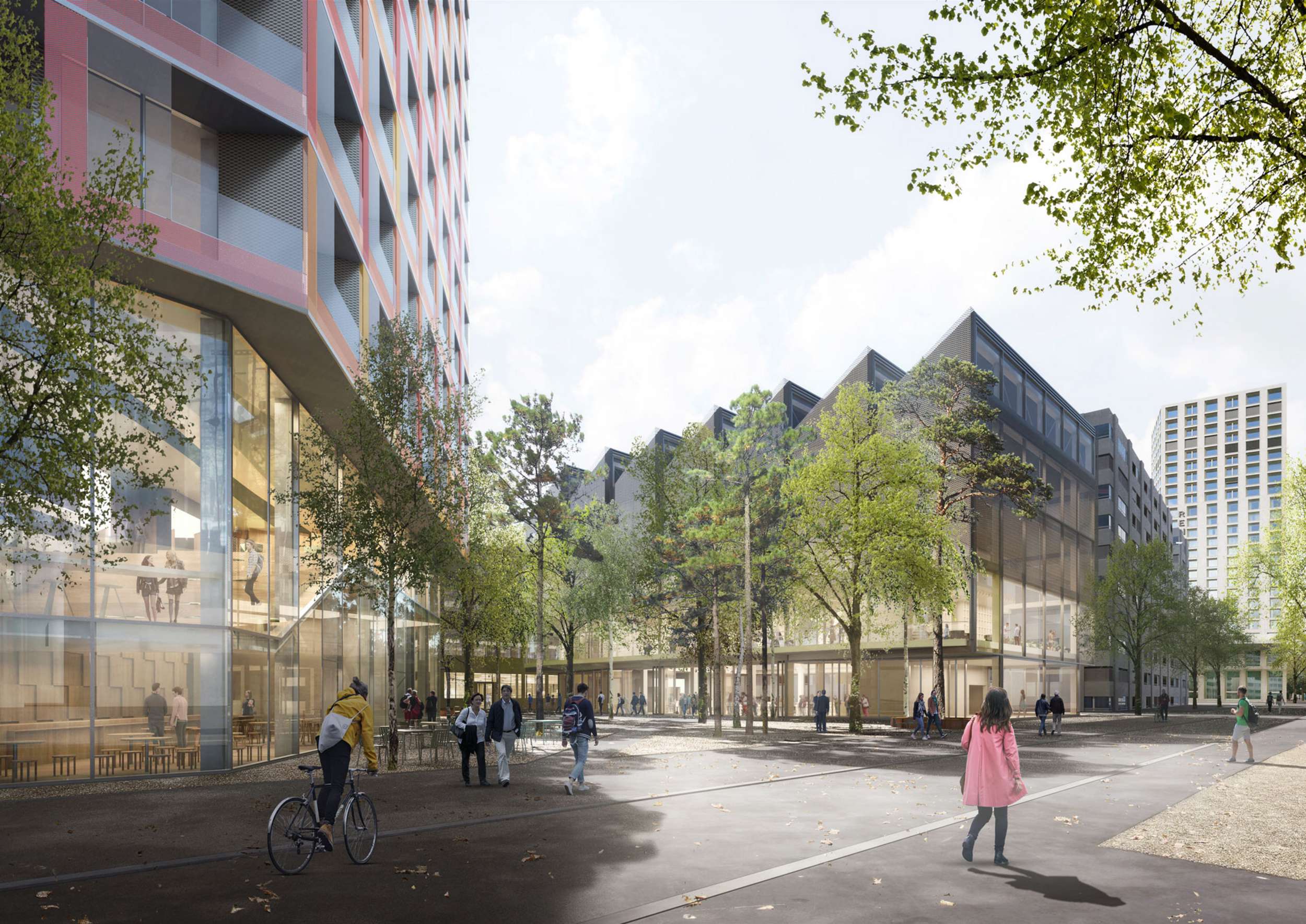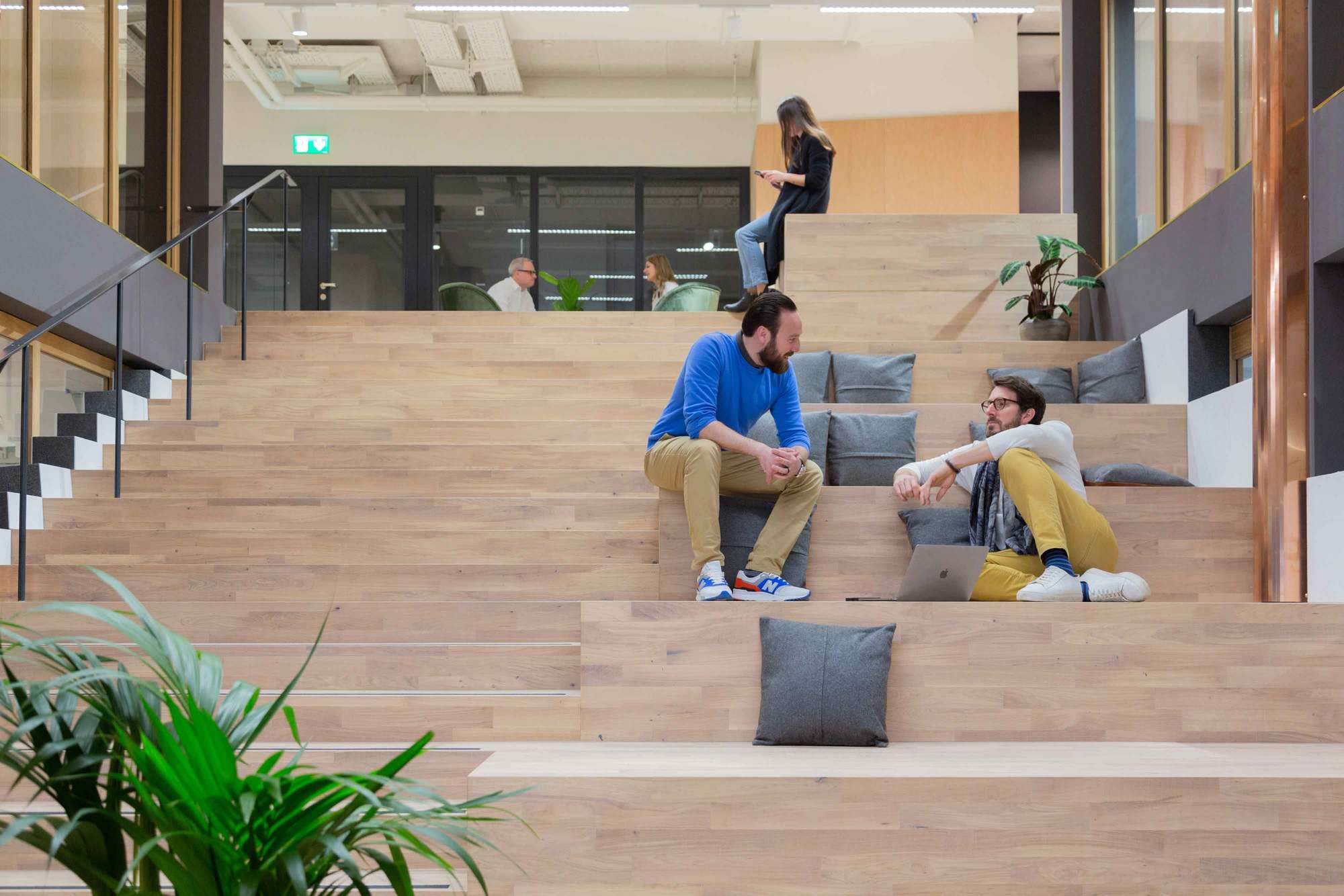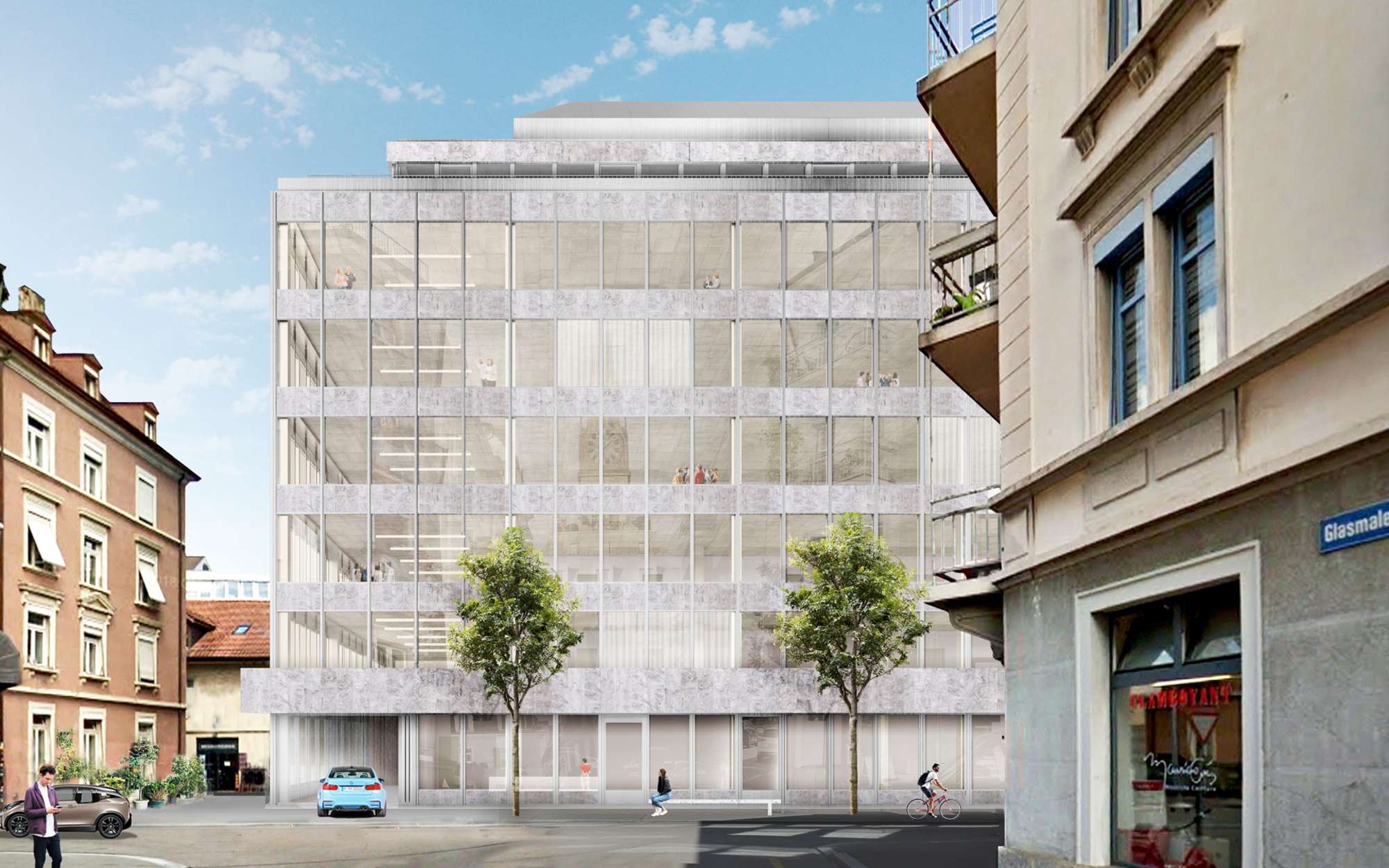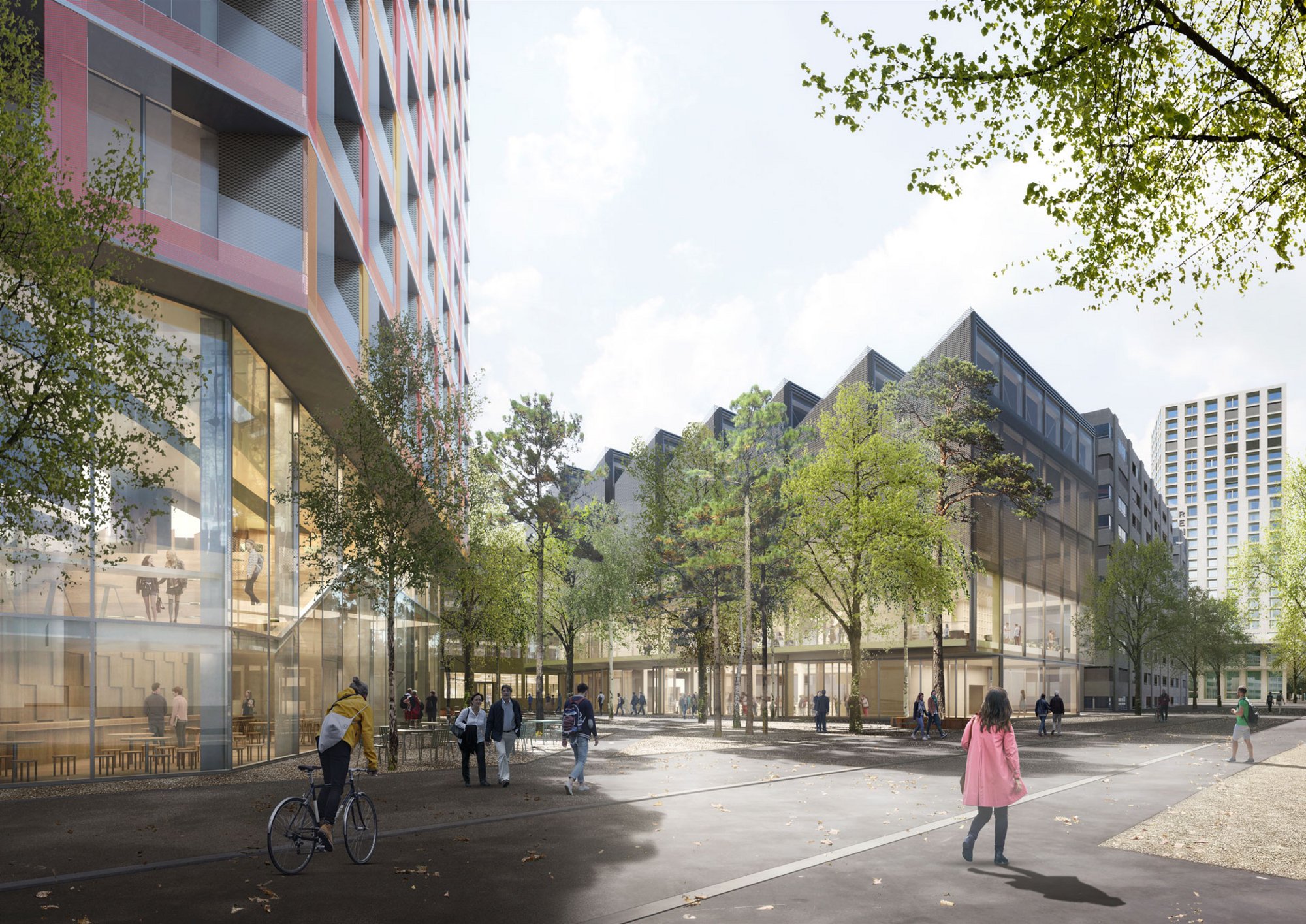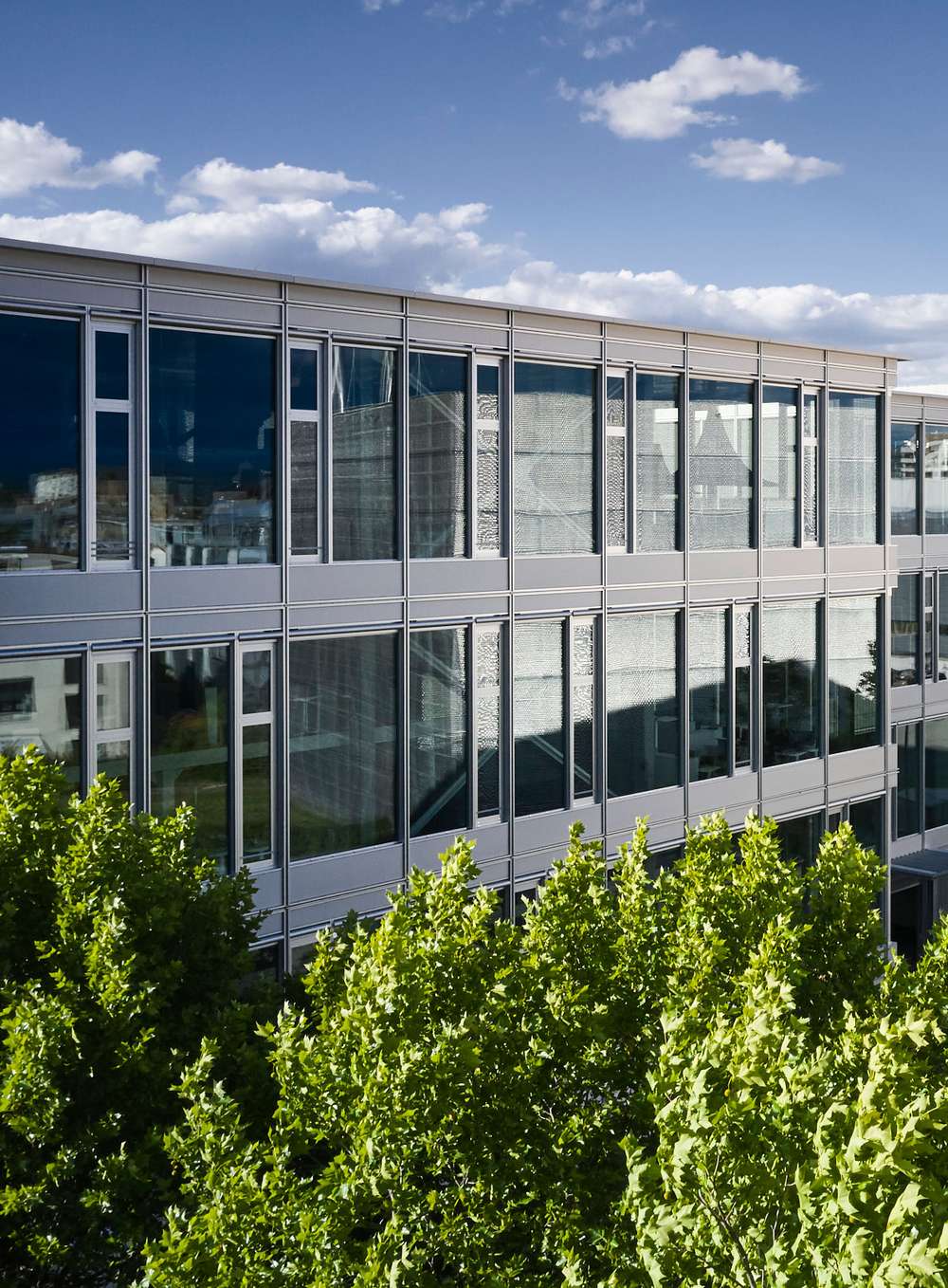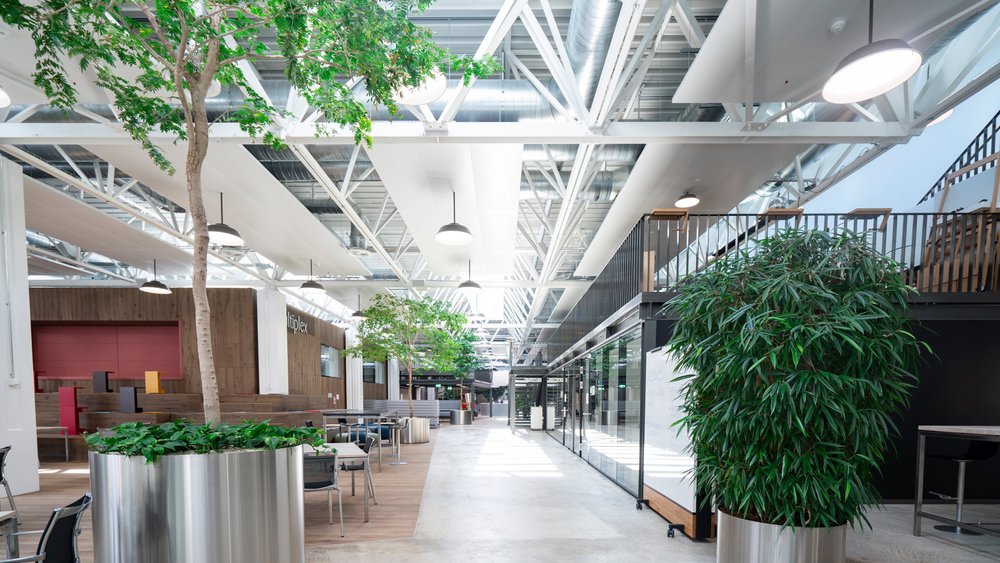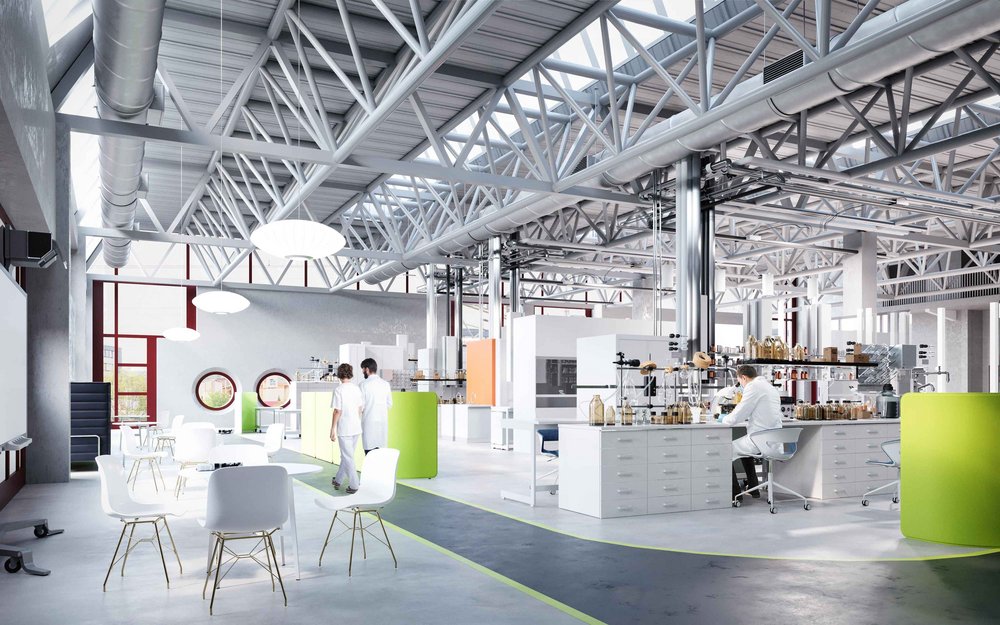Story Detail
Climate-neutral property portfolio – an announcement, an ambition
Target of climate-neutral property portfolio by 2040 calls for a multifaceted strategy
One requirement for decarbonising the property portfolio is transparency with regard to the greenhouse gas footprint, around 68% of which arises during the use phase.1 The monitoring of energy and carbon emissions implemented at Swiss Prime Site forms the basis of the CO2 reduction pathway developed in 2019. The transparency around the future development of emissions that this creates is the foundation for the target of climate-neutral operations by 2040 and simultaneously serves as a control instrument.
So the goal is clear, and the strategy wide-ranging. The company’s efforts are focused on the reduction of emissions that can be directly influenced and the «operational carbon» use phase, the further development of the reduction pathway in a climate-neutral direction its implementation. This involves implementing instruments and processes that ensure the supply and production of renewable energy.
In addition to reducing CO2 emissions within our own value chain, we cannot disregard the environmental impact of our business activities resulting from indirect emissions in the supply chain – around 30% from raw material extraction and suppliers – and in the material cycle. It is important that the transparency we achieve in our operations is also apparent in the supply chain and in the «embodied carbon» emissions contained in building stock, so we can develop a binding target definition and a reduction strategy in this area as well.
Finite resources call for circular thinking and new business models
Swiss Prime Site believes that the concept of the circular economy can help buildings become material depots with financial value in the long term and make a major contribution to reducing waste generation; 84% of the volume of waste in Switzerland comes from the construction industry. To do this we need to consider technical cycles (e.g. disassembly) and biological cycles right from the planning stage and, as a matter of utmost importance, to make available the relevant information on materials and their recycling capabilities. On specific projects such as Müllerstrasse in Zurich, Swiss Prime Site is working together with Madaster Switzerland to optimise recycling capabilities in buildings, create an inventory and make the concept transparent and tangible.
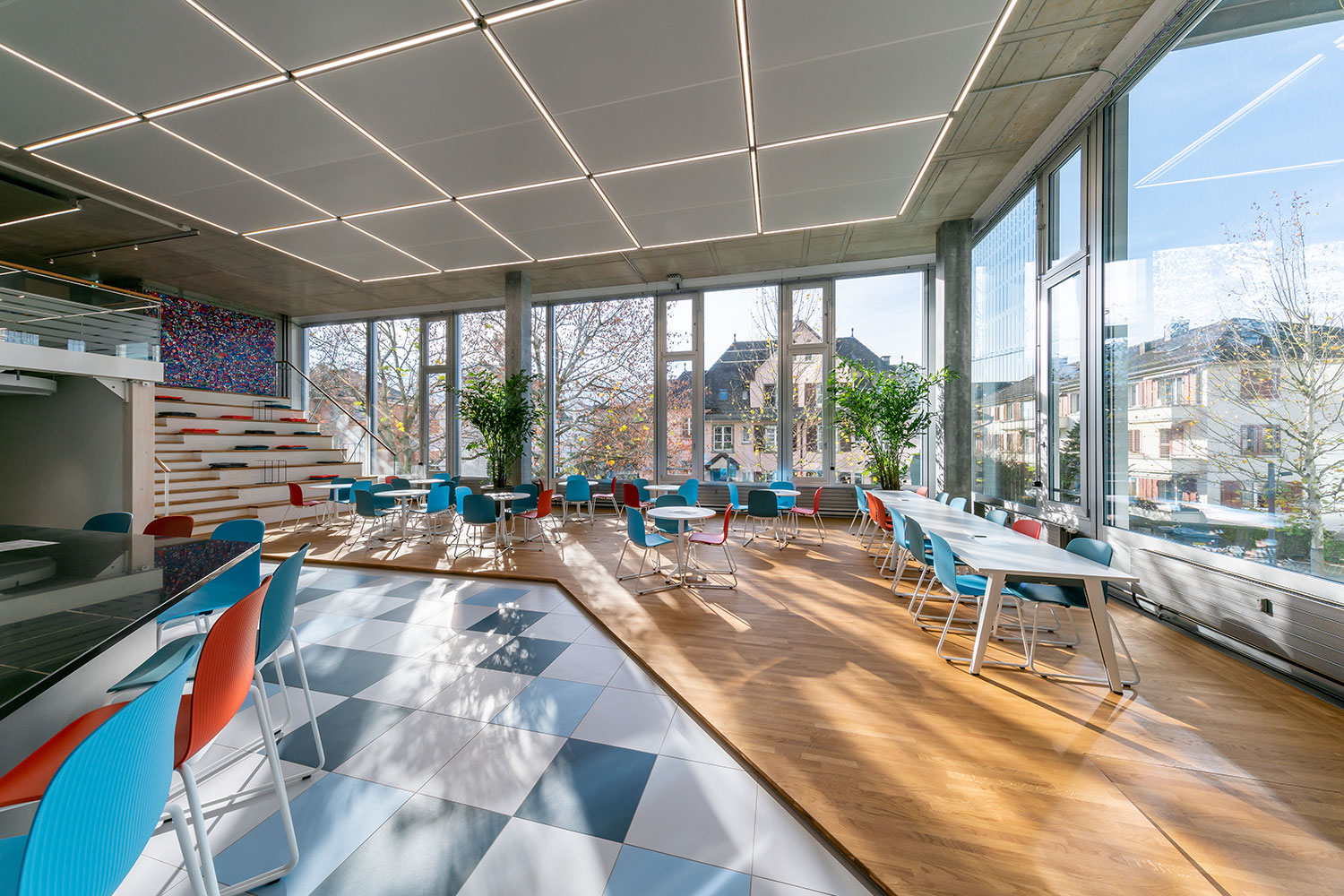
However, the circular economy goes beyond technical and environmental cycles. The changing climate requires a profound transformation and innovation of our current, linear economic system. For Swiss Prime Site this means questioning the existing business model and developing it further with new innovative methods, cycle-oriented processes and new forms of collaboration. The key lies in a new mindset, reflected in our corporate values and culture. Achieving this depends on continuously raising awareness, sharing knowledge and strengthening purchaser competence.
Shaping the future
This moment requires us to think beyond our established boundaries and linear systems, and to boldly advance with practical examples. Swiss Prime Site lives up to its corporate responsibility, promotes innovation and, above all, it is seizing the opportunities produced by the required transformation.
The article is published as part of NZZ RED. Author: Martin Pfenninger, Head Group Sustainability
sustainability at swiss prime site
1 Source: FOEN, Environmental Atlas of Swiss Supply Chains (Umweltatlas Lieferketten Schweiz), 09/2020
